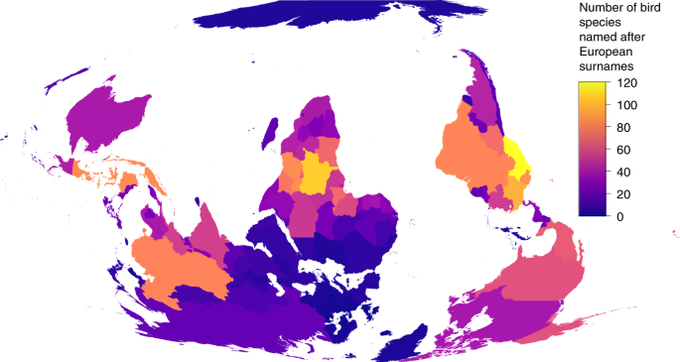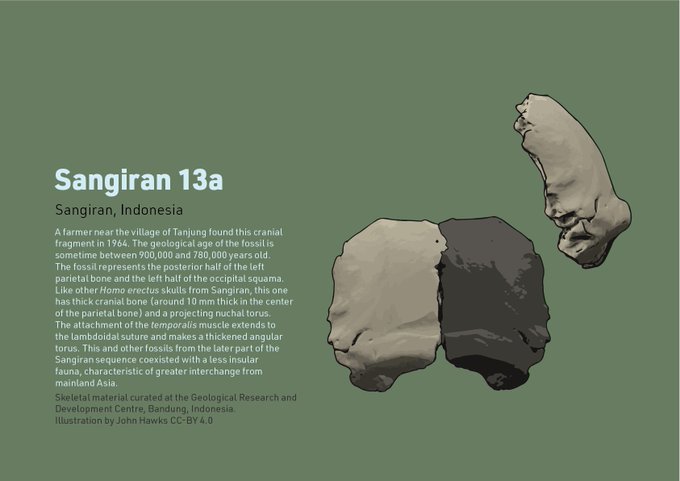"Taxonomists frequently name species after colleagues or wealthy patrons from the Global North. However, these names often carry little ecological information compared with pre-existing Indigenous names related to species habits and uses." https://t.co/io8s3R55On
Even small fragments of Homo erectus skulls are often very recognizable, due to their thick cranial bone and prominent, thickened entheses. This #hominin skull fragment existed at a time of faunal interchange between Java and mainland Asia. #paleoanthropology
One of the beautiful #hominin fossils found in South Africa during the last few years is the DNH 155 skull, reconstructed by @Palaeozone. This Paranthropus robustus individual lived sometime around 2 million years ago. #paleoanthropology #FossilFriday
Homo antecessor is a species that occupies a fascinating time and place in human origins. The #hominin material from Gran Dolina are the closest known sister group to the common ancestor of today's people, Neandertals, and Denisovans. #paleoanthropology
Notice however that Au. sediba is not sampled in the EDJ morphology paper. All of the Swartkrans assignments to "Homo" predate the discovery of Au. sediba, and we have to re-evaluate these attributions in light of Au. sediba's Homo-like dental and mandibular morphology.
The most complete skeleton attributed to Australopithecus afarensis is the young child from Dikika, Ethopia. This #hominin had a hyoid bone similar to chimpanzees and gorillas, suggesting apelike vocal communication. #paleoanthropology
The #hominin skull from Hexian, China, is a Homo erectus individual from around 410,000 years ago, who suffered soft tissue injuries to his or her scalp—in today's people consistent with injury from extreme hair pulling or burns. #paleoanthropology
The fossils from Caune de l'Arago, France, are around the same age as the large Sima de los Huesos sample of early Neandertals. Whether they represent the same #hominin population is not clear. They test our ability to determine relationships with morphology. #paleoanthropology
But another fossil that associates a mandible and cranial material is OH 13, and that also shows a number of dental and mandibular similarities with KNM-ER 992, as Bernard Wood has repeatedly emphasized. In those ways, OH 13 is actually different from OH 7, the habilis holotype.
KNM-ER 992 was one of the #hominin fossils discovered by Richard Leakey's field team that were claimed as holotypes for species named by other scientists: in this case Homo ergaster. This "taxonomic scramble" of the 1970s and 1980s left a harmful legacy in #paleoanthropology











